
Neglected No Longer: Bringing Early Helladic Tiled Roofs to Life
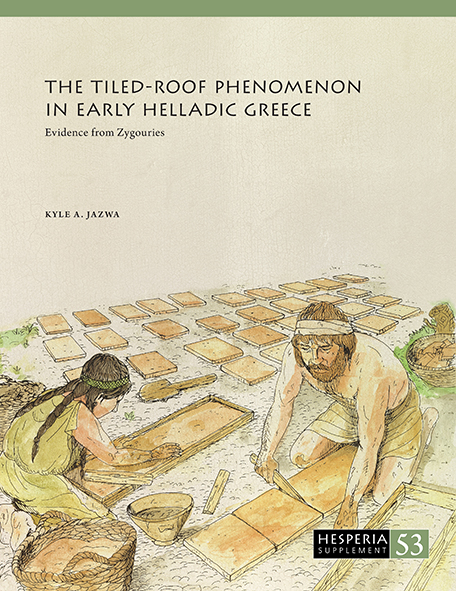 The latest publication in the ASCSA’s Hesperia Supplement series is Kyle A. Jazwa’s The Tiled-Roof Phenomenon in Early Helladic Greece: Evidence from Zygouries (Hesperia Supplement 53). This groundbreaking study offers the first comprehensive publication of an entire assemblage of Early Helladic (EH) roofing tiles, an oft-neglected find on archaeological sites. Jazwa first presents details about the forms, features, and variability of the tiles from Zygouries before embarking on a series of production-oriented analyses. Building on his meticulous observations of impressions and markings on individual tiles, he reconstructs much of the chaîne opératoire of the tiles’ production and applies it to complete volumetric and energetic studies. After exploring the local reception and sociopolitical implications of the tiled roof at Zygouries, Jazwa further contextualizes the Zygouries material alongside contemporary tile assemblages to gain wider perspectives on tiled roofing technology, social organization, and economic investment in the Early Bronze Age. Now at work on a study of EH roofing tiles from sites in Attica as well as a more comprehensive project on EH architecture, Jazwa recently took time to discuss the development of his new book.
The latest publication in the ASCSA’s Hesperia Supplement series is Kyle A. Jazwa’s The Tiled-Roof Phenomenon in Early Helladic Greece: Evidence from Zygouries (Hesperia Supplement 53). This groundbreaking study offers the first comprehensive publication of an entire assemblage of Early Helladic (EH) roofing tiles, an oft-neglected find on archaeological sites. Jazwa first presents details about the forms, features, and variability of the tiles from Zygouries before embarking on a series of production-oriented analyses. Building on his meticulous observations of impressions and markings on individual tiles, he reconstructs much of the chaîne opératoire of the tiles’ production and applies it to complete volumetric and energetic studies. After exploring the local reception and sociopolitical implications of the tiled roof at Zygouries, Jazwa further contextualizes the Zygouries material alongside contemporary tile assemblages to gain wider perspectives on tiled roofing technology, social organization, and economic investment in the Early Bronze Age. Now at work on a study of EH roofing tiles from sites in Attica as well as a more comprehensive project on EH architecture, Jazwa recently took time to discuss the development of his new book.

Jazwa measuring roofing tiles in the Corinth Museum
Jazwa’s journey as a scholar of roofing tiles began fortuitously in 2011, during a study season at Mitrou. Initially tasked with studying unfired clay architectural fragments, Jazwa found himself expanding his research to include roofing tiles when the original student assigned to study the tiles could not continue. “Because I had no prior experience with EH tiles, I spent quite a lot of time that summer—and summer 2012—studying the fragments as closely as possible,” Jazwa recalls. His Ph.D. research included work on architectural construction, a background that proved invaluable in allowing him to reconstruct manufacturing methods through the identification of common impressions and markings in various building materials.
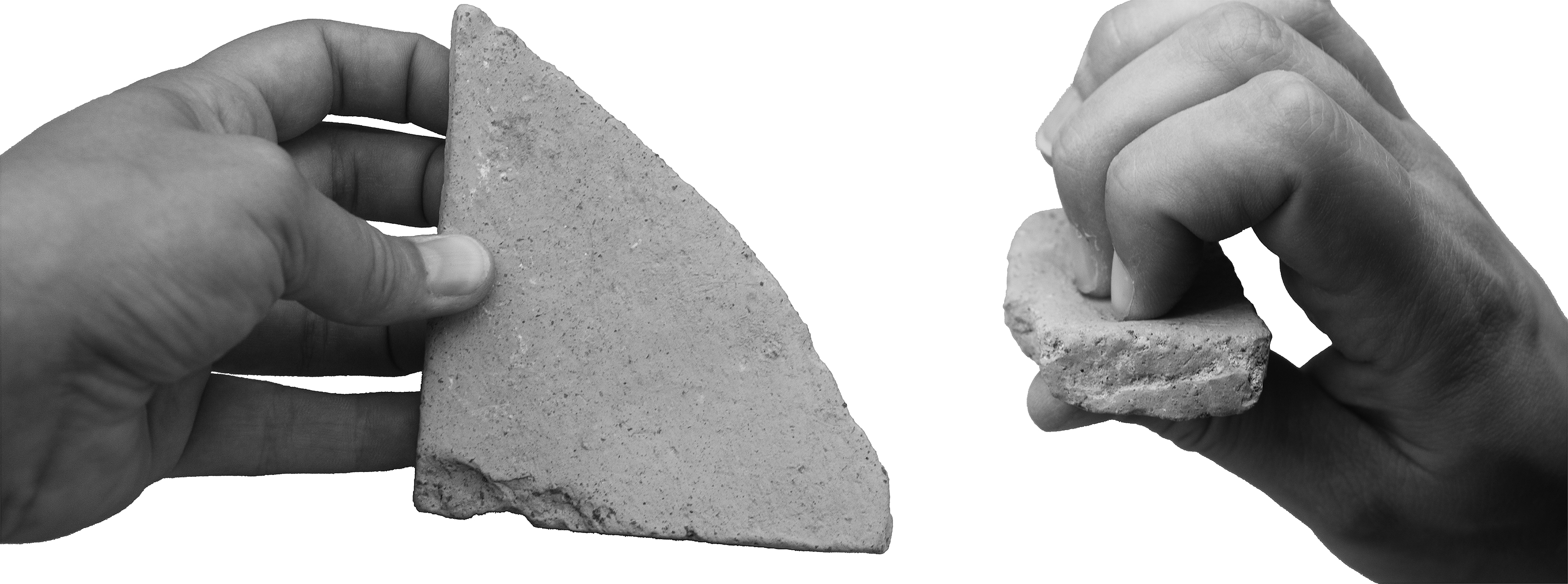
Observing the location of finger impressions on roofing tiles allowed Jazwa to identify possible hand placements used when lifting the tiles
While the study of roofing tiles remained a side project to his dissertation, Jazwa’s growing interest led him to apply for permits through the ASCSA to study other EH tile assemblages, including those from Lerna and Zygouries. A fortunate encounter with Jeremy Rutter, his former professor and a leading expert on the Aegean Bronze Age, resulted in a pivotal trip to examine these materials during Jazwa’s year as an Advanced Fellow at the ASCSA in 2013. “This trip was my first introduction to Zygouries’s tiles,” says Jazwa. Realizing that no one was studying the Zygouries material, he applied for permission to publish the assemblage, thus setting the stage for his comprehensive study. Serendipitously, Jazwa’s Ph.D. advisor, Daniel Pullen, had made the original identification of the Zygouries tiles within the bulk pottery saved from the site during his own dissertation research in the 1980s. Pullen generously shared his notes with Jazwa and remained a steadfast supporter of his work throughout the project.
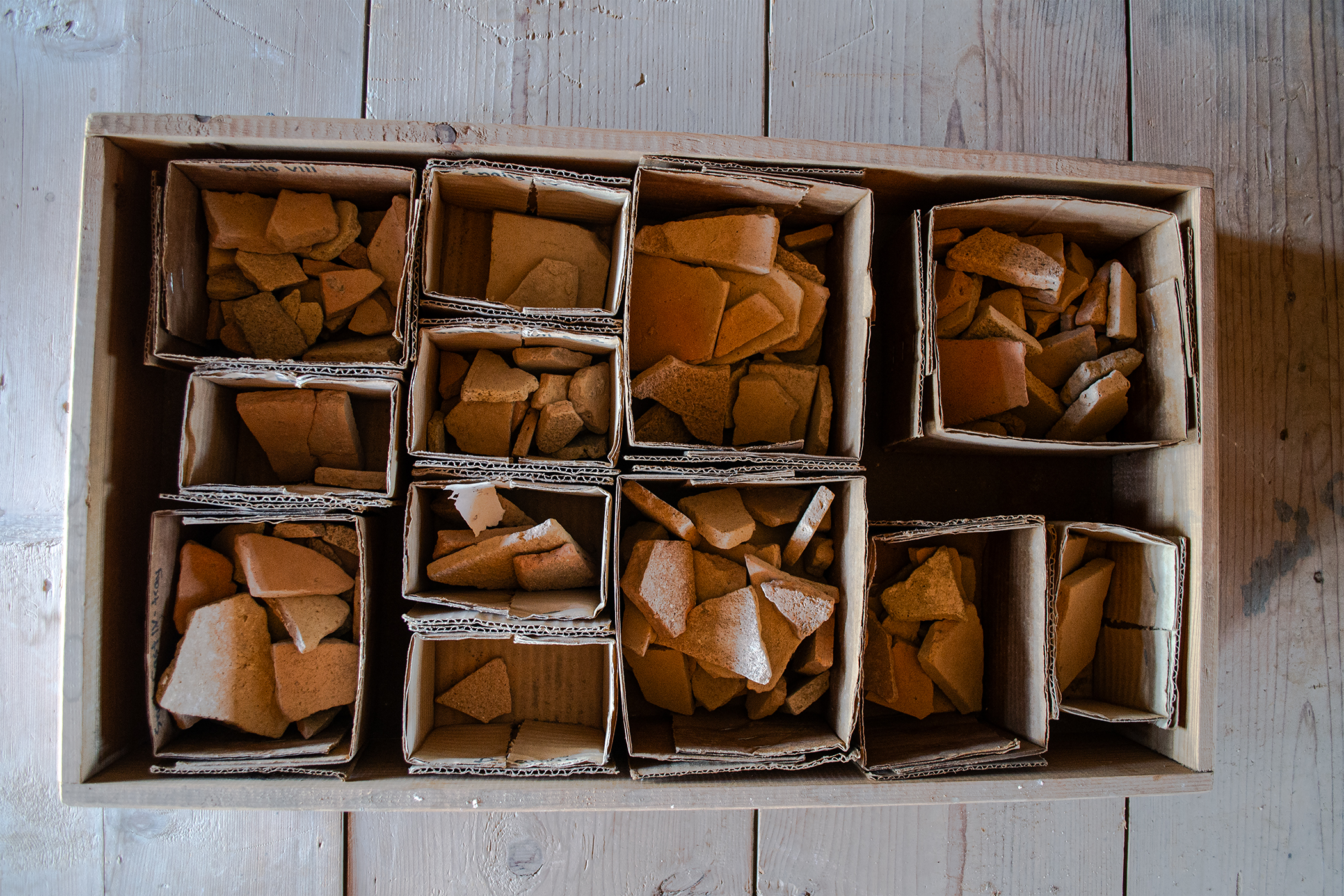
When Jazwa began his study, the Zygouries tiles were organized in boxes and crates like these
Initially, Jazwa had not planned to present his study as a book. However, the more he researched, the more he realized the necessity of a complete study of EH roofing tiles. “At the start of my research,” he recalls, “I was surprised by how little had been published about the EH tiles, relative to the number of assemblages that have been identified, considering how well known the House of the Tiles at Lerna and other EH corridor houses are.” After he decided to undertake an energetic analysis of the tiles’ manufacturing, it became clear that an article-length study would not suffice. The result is a monograph that not only catalogues the tiles but also examines their production and significance. “I am very happy that my first monograph is about roofing tiles,” Jazwa notes, reflecting his enthusiasm for often-overlooked aspects of archaeological research. “It is a fun challenge trying to learn as much as possible from objects that initially do not appear to have much to offer,” Jazwa explains. When he finds out something new from close study of objects like tiles or mudbricks, “I tend to get the same sense of discovery that comes when excavating,” he says.
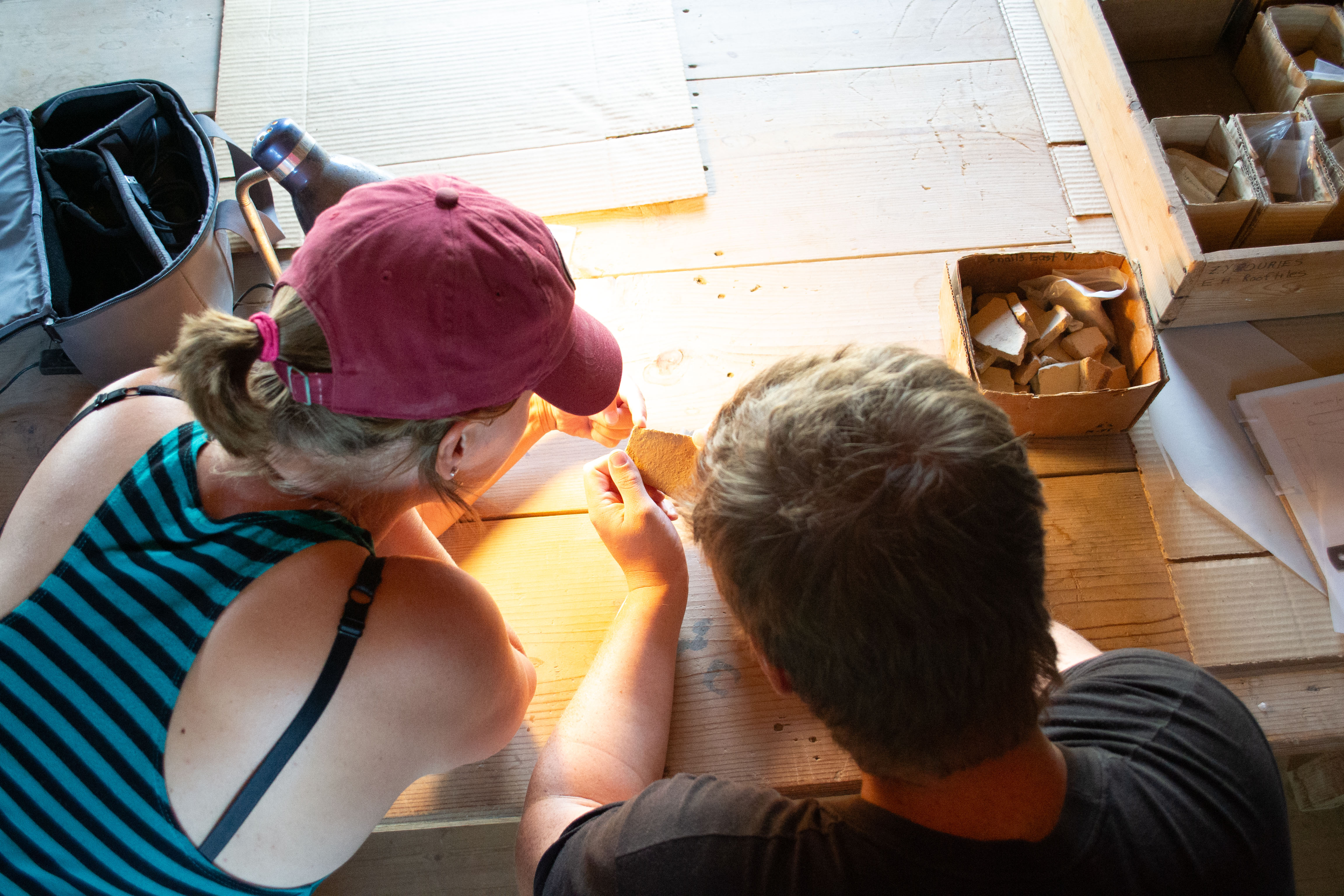
Jazwa’s study involved many hours of close examination of tile fragments, often assisted by archaeologist and photographer Kimberley van den Berg
Jazwa first visited Zygouries itself in 2017. Excavated by Carl Blegen in the 1920s, the site is now backfilled and covered with fruit trees, but his visit helped him better orient Blegen’s archival excavation photographs and understand the sight lines and transit routes through the Kleonai Valley. Most of Jazwa’s firsthand study of the Zygouries tiles took place in the Old Museum at Corinth in the summers of 2017 and 2018. Despite heat waves and no electricity—much less air-conditioning—in the storerooms, he recalls the experience of working with the tiles fondly. The setting could not have been more appropriate: surrounded by Bronze Age pottery from throughout the Corinthia excavated by Blegen and others, with a view of ancient Corinth through the window. One of the most eventful incidents during his research occurred when he was bitten by his host family’s dog, leaving several scars on his hand and forearm. “You could say that this book scarred me for life!” he jokes. This incident, however, led to a close bond with his host family.

The Kleonai Valley today, with an arrow indicating the location of the low mound of Zygouries
Jazwa hopes his volume will renew interest in prehistoric roofing tiles and the EH period in general. Among the results of his study, he was particularly surprised by the labor-intensive process of creating a single ceramic-tiled roof with EH technology. “They devoted considerable time and labor to make an architectural feature that we often take for granted,” he marvels. Reflecting on the life history of his project and the support of mentors like Rutter and Pullen, Jazwa advises junior scholars and first-time monograph authors to be patient with their research and not be afraid to ask for help and advice. He credits his time at the ASCSA—beginning as a Regular Member in 2012–2013—for connecting him to a network of friends, colleagues, and collaborators as well as opportunities for fieldwork and “an unparalleled education in Greek history and archaeology of all periods.”
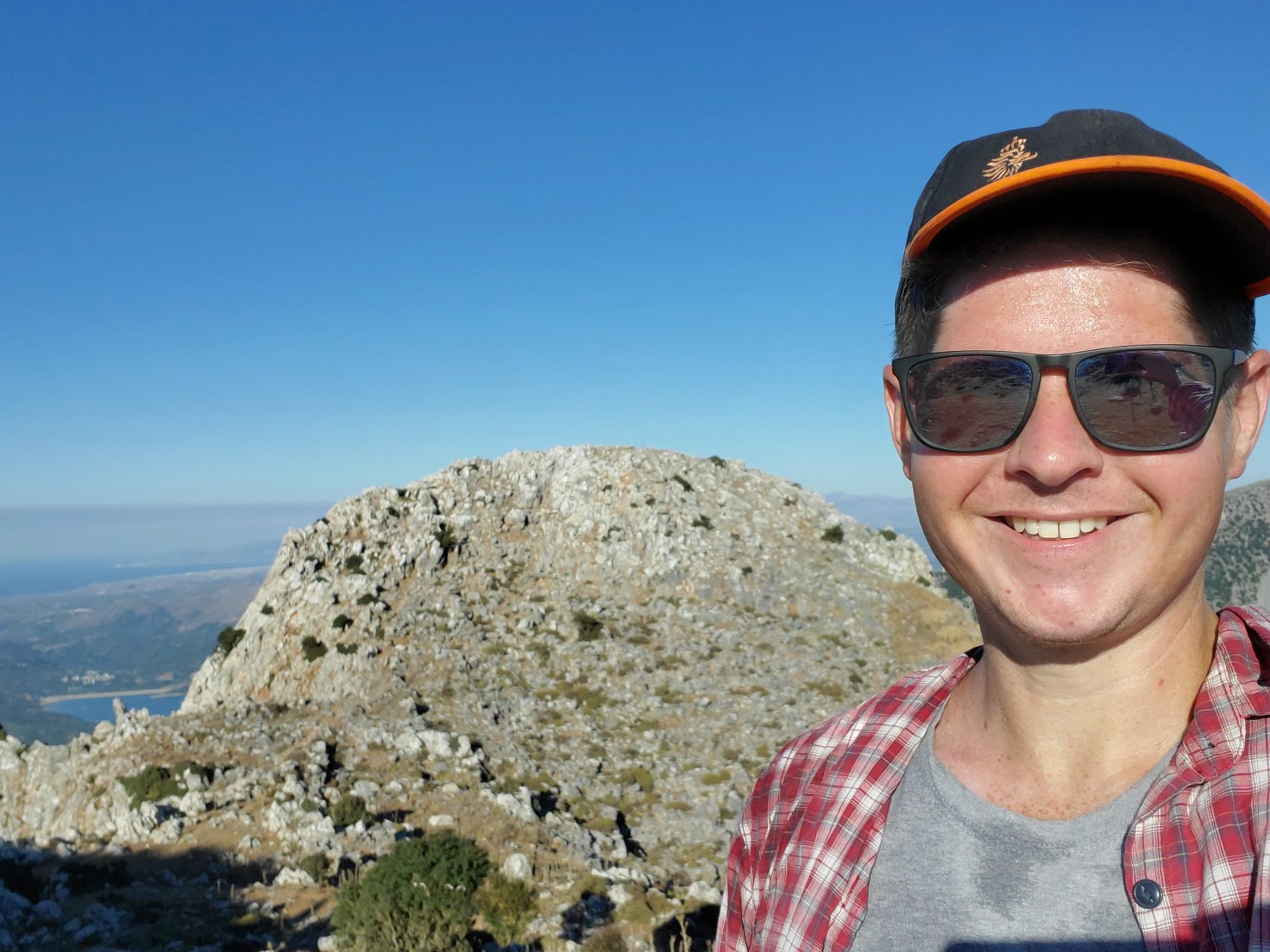
Jazwa after looking at (much later) architecture at the site of Karphi
The Tiled-Roof Phenomenon in Early Helladic Greece: Evidence from Zygouries is a testament to Jazwa’s dedication to discovering all that can be learned through close attention to previously neglected materials. He recommends that other students of Bronze Age architecture spend as much time as possible with their material, recording even seemingly inconsequential details—the methodology of close autopsy that allowed him to piece together the puzzle of EH tiled roofs. “Try to think outside the box and apply methods from elsewhere,” Jazwa also urges, and when traveling, “always look to see how other artisans and craftsmen work. You never know where you will find inspiration or comparanda for your material!”

The colorful tiled roof of St. Stephen’s Cathedral in Vienna—inspiration for imagining the possibilities of decorative ceramic-tiled roofs in Early Helladic Greece
The Tiled-Roof Phenomenon in Early Helladic Greece: Evidence from Zygouries (Hesperia Supplement 53) can be ordered from our distribution partner, ISD.